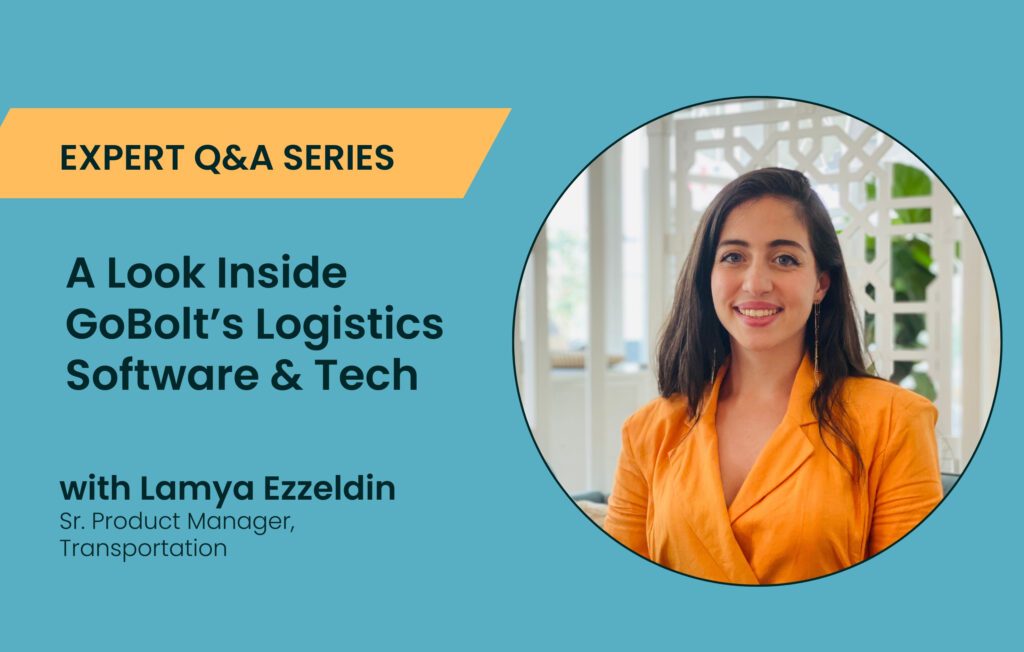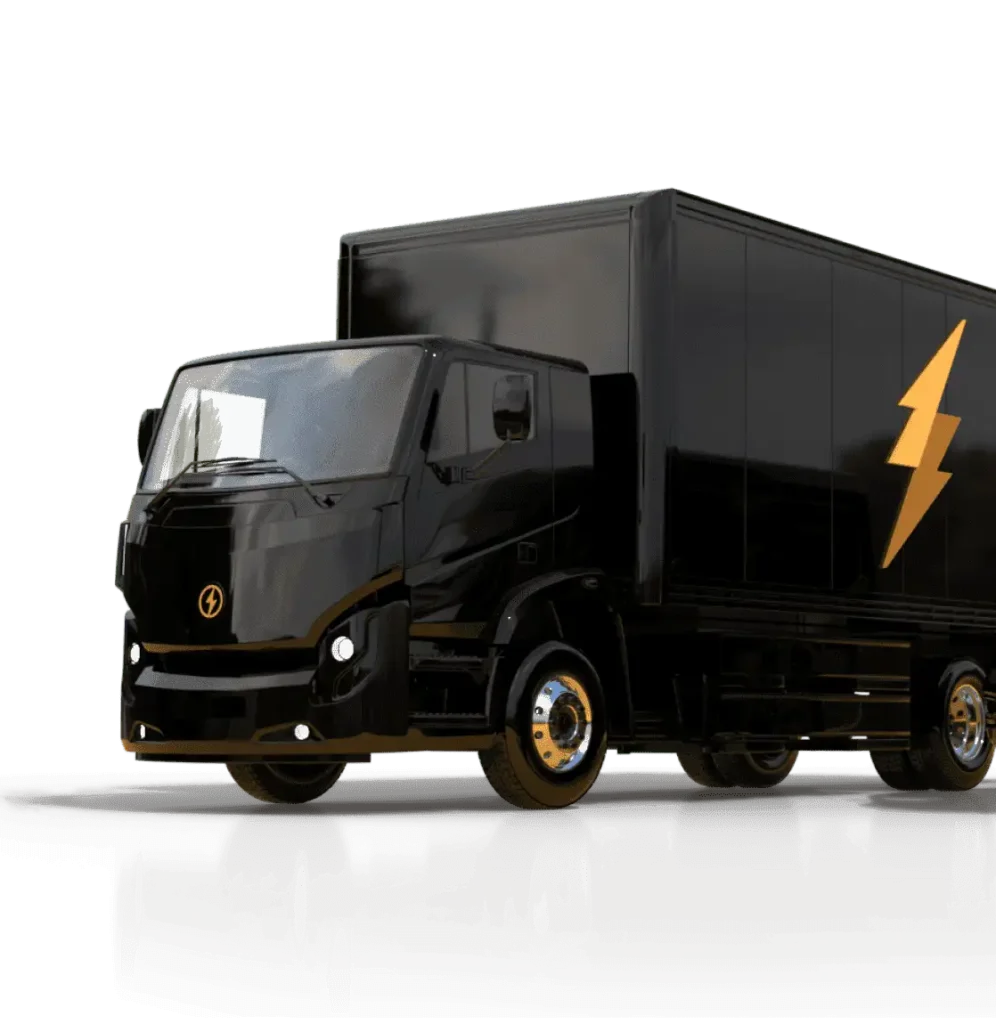What does it really take to build a sustainable supply chain network? In this two-part series, we go straight to GoBolt cofounders Mark Ang (CEO) and Heindrik Bernabe (CTO), alongside Senior VP of Commercial, Jarrett Stewart to talk sustainable logistics.
In this conversation, they share insights on the origins of GoBolt, the philosophical shifts that have shaped its trajectory, and the company’s ongoing pursuit of a sustainable logistics model that’s not just operationally efficient but also environmentally conscious.
Before we dive right into the interview, here’s a tl;dr on some of GoBolt’s best sustainable logistics practices and strategies.
Unveiling Sustainable Logistics Best Practices: Lessons from GoBolt
In the pursuit of building the industry’s largest sustainable supply chain network, GoBolt’s leaders share their journey and unveil some of their best tips and practices that have guided their path towards environmental responsibility and operational excellence.
As a tl;dr, here are some of the top strategies our leaders have focused on when building a sustainable logistics business:
- Embrace Holistic Business Reinvention: Consider reshaping your business model to prioritize sustainability. Look for ways to align your operations with your environmental goals.
- Leverage Technology for Efficiency: Invest in technology to streamline your operations and reduce your environmental footprint. By implementing software solutions for route optimization and inventory management, you can minimize waste and emissions while improving efficiency.
- Transition to Electric Vehicles: By switching to EVs, you can significantly reduce carbon emissions associated with transportation. Consider setting goals for electrifying your delivery fleet over time to make a positive impact on the environment.
- Implement Reverse Logistics Strategies: Develop strategies to minimize waste through reverse logistics. Instead of sending returned products straight to landfills, find ways to refurbish or repurpose them. For instance, consider partnering with charities or recycling facilities to divert returned items from the waste stream.
- Integrate Operations for Efficiency: Streamline your logistics operations by integrating different processes. By coalescing delivery and recycling operations, you can reduce inefficiencies and minimize environmental impact. Look for opportunities to optimize resource use and eliminate unnecessary waste.
- Promote Recycling and Reuse: Establish recycling programs to minimize waste generation within your supply chain. Find ways to reduce plastic packaging and recycle materials such as cardboard from deliveries.
- Support Sustainable Ecommerce Practices: Offer services to help online retailers minimize their environmental impact. Develop solutions for processing returns in an eco-friendly manner, such as refurbishing or reselling returned items. By assisting retailers in diverting returns from landfills, you can contribute to both their financial success and environmental sustainability.
Sustainable Logistics Q&A with GoBolt Leaders

To kick off this Q&A conversation on sustainable logistics, here’s what Mark had to say about GoBolt’s sustainable journey and initiatives beyond EVs and technology:
Mark, what set you and Heindrik on the path to building the industry’s first sustainable supply chain network?
Mark: Heindrik and I started the business as a valet storage company. Ultimately, we pivoted away from our initial idea because we didn’t like the notion that we were essentially helping people more efficiently hoard their things. When we thought about our older selves reflecting back on our legacy, we didn’t think that business model would make for a very inspiring story.
So, we decided to holistically reinvent the business. What turned out to be true was that we had built an amazing 3PL for consumer items. We had a complex system that was going to be super challenging to scale, but we wrapped technology around it and set our sights on achieving a high-quality level of execution. We applied what we did best to retail businesses, and in doing so became a full-fledged 3PL marrying our warehouse component with last mile deliveries.
We took it a step further and thought about what would happen if our business grew and was successful. How many vehicles would we have on the road every day? That number became quite staggering as we looked at projections. That’s when the conversation turned to electric vehicles and what it would look like for GoBolt to adopt EVs. There were a number of consumer EVs in the market at the time, but there weren’t many EV commercial trucks.
So we said, let’s partner with manufacturers who have expressed interest in building commercial EVs and be their guinea pigs to help advance the technology. This was a philosophical change in GoBolt’s direction. But we embraced the desire to holistically revamp ourselves in a way that we would be proud of and embarked on the sustainable logistics space with the goal of not further compounding environmental problems but solving them. We said, let’s do this the right way. Let’s do it with technology, sustainability, and a continued emphasis on service. And that’s what we’ve done.
Will you explain GoBolt’s initiatives to reduce carbon emissions and share how you’re progressing toward this goal?
Mark: Our key sustainability initiatives hinge on leveraging technology and electrifying the last mile. Before investing in GoBolt’s EV trucks and infrastructure, our fleet ran on diesel power. So, we decided to go all in on technology to increase our efficiency and optimize delivery routes. In doing so, we travelled fewer kilometres, had fewer trucks on the road, and produced fewer emissions.
That’s why we consider ourselves a tech-first business. Heindrik has led our technology development since day one, and we now have a lot of really cool software managing our routing in a dynamic way. We’ve also adopted EVs and our business has become synonymous with electrification.
Our goal is to have the vast majority of our zone one delivery be electric by 2025, and we’re headed in that direction.
Watch: Mark Ang talks about sustainable logistics and how GoBolt is reducing carbon emissions:
Tell us more about GoBolt’s sustainable logistics initiatives aimed at reducing waste and promoting recycling?
Mark: Outside of our electrification ambitions, where we feel we can drive the most nominal impact by electrifying all of our deliveries, there are other things we’ve undertaken inside of our warehouse and with our partners to further expand our splash radius of sustainability and ESG.
The first thing that we’ve been doing since our early days is reverse logistics for mattress and furniture products. Do you remember when box mattresses and 100-night trials became super popular? There were so many returns. In fact, something like 1 in 5 of those mattresses purchased resulted in a return. The obvious question was what do you do with them? Many companies would have a junk company pick up the returns and take them to the landfill right away.
What we would do instead, because we had that high-touch reverse logistics valet storage solution, was go into homes, bag the mattresses, and bring them to a charity. The mattresses then go to help support people in need. Not only were we diverting from landfills and reducing the environmental impact, we were also, and continue to, help people and families who can’t afford furniture. We’re really proud of that. In Toronto, we’ve picked up and donated furniture that stacks at least eight CN towers tall, which is pretty wild. We’re excited to continue this because as we’ve gotten more voluminous, that impact continues to grow by the week.
The other thing we do is coalesce the operation on the last mile, white-glove side with our warehousing fulfillment side. So, when we do a white-glove delivery and set up furniture we manage the entire assembly process from start to finish. Our customers don’t have to keep track of Allen keys, pull out their screwdriver, or worry about packaging and waste — we take that back to our sites. We sort it and pull out the recyclable material. This then goes to our partner who recycles the materials and provides us with different size boxes for our ecommerce shipments.
Our last mile division produces a ton of corrugated waste, but we’re able to recycle that waste and reuse it in our e-comm division, which is really cool. This is a unique advantage to having a truck division and a fulfillment division. Absent one, we wouldn’t be able to bring these two needs together. We’re excited about being able to make this positive environmental impact and that it will continue to grow as our volume continues to grow.
Another innovative approach we’re taking to sustainable logistics is scaling our ecommerce returns processing. This service helps online retailers divert their returns from landfills. Historically, online retailers would route the majority of their returns to landfills or simply tell their shoppers to throw the item out to avoid paying for the return label. Now, with the help of GoBolt and our ability to refurbish returns, these brands are able to return about 97% of their returns back to stock for resale. This is a positive for their balance sheet and the environment.
Thanks for joining our sustainable logistics Q&A! There’s still more to our conversation. Check out part two as we continue to explore the transformative evolution, strategic focus and technological innovations that have propelled GoBolt into a position of industry leadership.







